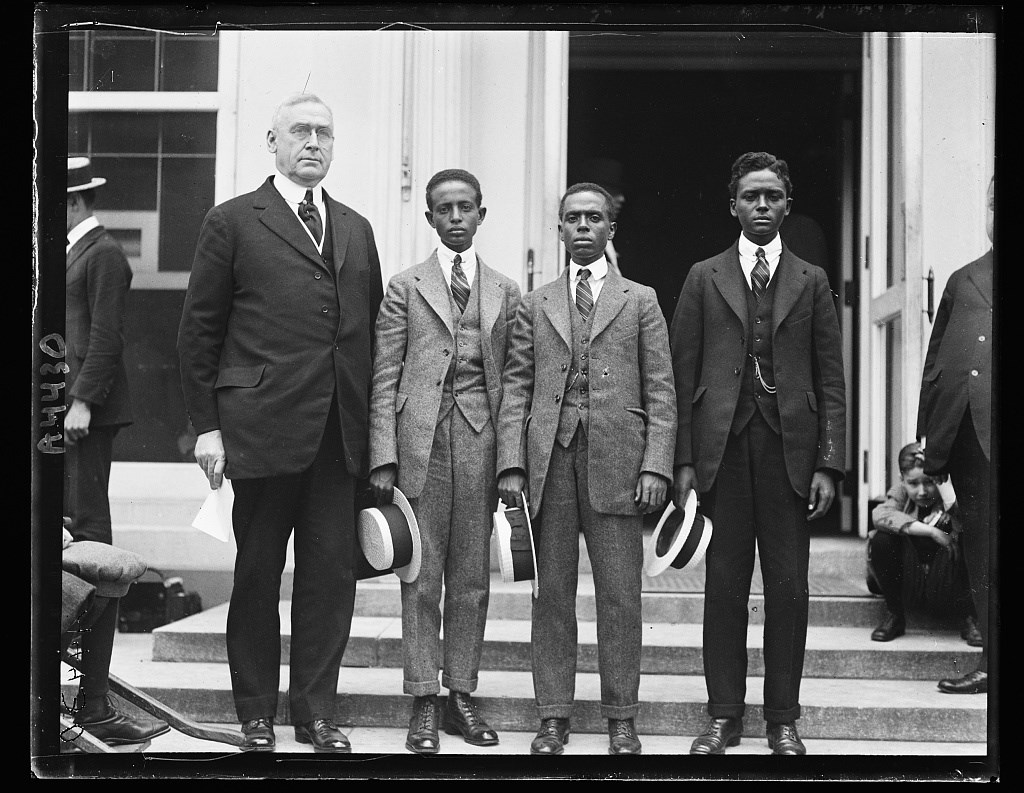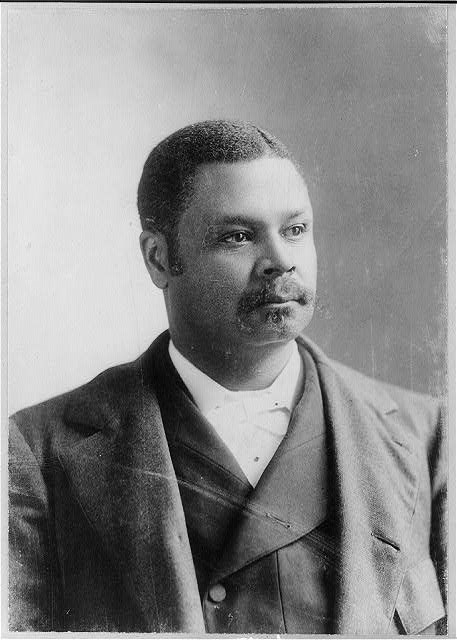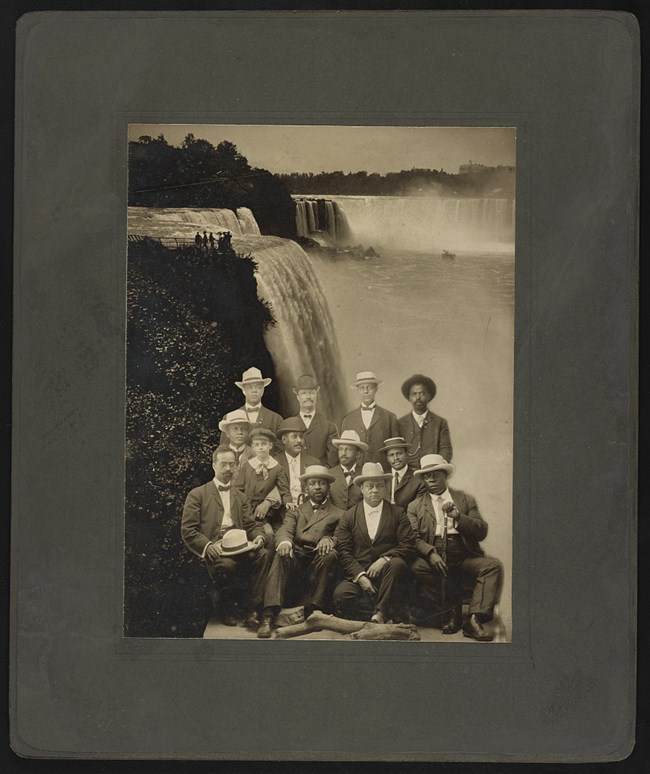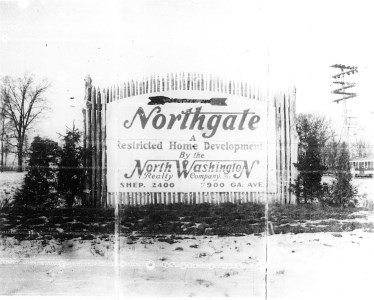Part of a series of articles titled A Timeline of Resistance: The Perseverance of African Americans from the Revolutionary War to the Civil Rights Era.
Article
The Early Civil Rights Struggle in the National Capital Area

Harris & Ewing, photographer, 1922 - Library of Congress
A Timeline of the Early Civil Rights Era 1900-1941
From emancipation to the Great Migration of the early 1900s, America’s growing Black population in the north faced the same racism we often associate with the south. Events during the years from 1900 to 1941 confirmed what many already knew: our nation was not following through with its promise of liberty and justice “for all.” From 1913 to 1921, the federal government under Woodrow Wilson supported segregation, and violence against African Americans went unpunished. From blatant terrorization, Jim Crow laws in every portion of life, to the limiting prospects of a White-dominated world, many African American civil rights activists and their allies rose to fight back against White supremacists. They laid the foundation for the modern civil rights movement with their bodies, minds, and even their lives.Information in this timeline comes from the Historic Resource Study: Reconstruction and the Early Civil Rights Movement in the National Capital Area by Cheryl LaRoche PhD, Patsy Fletcher, Caroline Spencer, and Lauren Hughes. It summarizes the challenges and triumphs stretching from 1900 to 1941, that built the foundation for the civil rights movement to come.

Unknown Photographer, Library of Congress
Timeline (1900 to 1941)
1900 - According to the Bureau of the Census in 1900, approximately 31% of DC residents (86,702 out of 278,718) were Black. (Data provided by Census.gov.)
1901 - George H. White, the lone Black US congressman who served from 1897-1899 and 1899-1901, gave up his seat on March 3 1901. It would be 28 years before another African American would serve in Congress.
1902 - Fannie Barrier Williams, Black educator and political activist for civil rights, centered women in the philosophy of self-respect redefining the “New Negro” movement in Washington, DC.
1902 to 1948 - More than 50 racially restrictive laws were established across the National Capital Area such as DC and Maryland. These laws limited African American property ownership in Silver Spring, Maryland and access to voter registration by requiring African Americans to prove their literacy by reading part of the Constitution and explaining it satisfactorily to registration officials. More examples of these Jim Crow era laws in the US.
1906 – The second Niagara Movement gathering had its first public meeting on American soil at Storer College in Harpers Ferry, West Virginia. Focusing its activism on full civil and political rights for African Americans, the organization cut ties from Storer College after its white president was replaced with a conservative leader. Read about Harpers Ferry and its connection to the Niagara Movement.
1909 – The Loudoun County Emancipation Association chose September 22 as Emancipation Day to build unity among African Americans.
1909 - Carter G. Woodson began his long career in Washington, D.C. He moved to the city to research his dissertation at the Library of Congress and teach in District of Columbia public schools.
1910 – The Baltimore Normal School (1865), the oldest historically Black college or university in Maryland, moved from Baltimore to Prince George’s County. The college was renamed Maryland Normal and Industrial School at Bowie, and ultimately Bowie State University.
1912 - President Woodrow Wilson fired hundreds of Black federal workers following his election as president.

Slater, R. P., 1905 - Library of Congress.
Neval Thomas, one of the twelve original founders and an early president of Washington, D.C branch of NAACP, led the chapter to become the largest in the country.
1915 - The second Jefferson School was opened in the community of Arlington View, Virginia.The first Jefferson School, established in 1884, grew quickly. In 1912 a group ofactivists pushed the school board to erect a second grade school for African Americans in 1st through 9th grades.
1919 – The Red Summer of 1919 was post-World War I period of riots and violence that occurred in several US cities, Washington, D.C included. Carter G. Woodson witnessed as a White mob “caught a Negro and deliberately helped him up as one would a beef for slaughter, and when they had conveniently adjusted him for lynching they shot him” (Sauer 2019, “Four-Day Race Riot”).
1920 - Nine-year old musician James Reese Europe came to Washington, DC with his family from 1891 till he left for New York in 1904. In his adulthood, he would play an instrumental role in securing appropriate, contractual employment for African American musicians.

DC Public Library/National Archives and Records Administration
1922 - On June 14, five thousand African Americans marched past both the U.S. Capitol and the White House in silent protest against lynching, holding placards denouncing the violent practice and urging a federal anti-lynching bill.
1925 - Dr. Alain Locke, writer, educator, and Howard University professor who is considered an originator of the Harlem Renaissance, gave literary voice to the evolving Black consciousness of the twentieth century through his book The New Negro. He proclaimed a new generation “vibrant with a new psychology; the new spirit is awake in the masses,” set free from “tyranny of social intimidation” and seeking “full initiation into American democracy.”
1935 - The “County-Wide League,” a union of all Negro Parent-Teacher Associations (PTAs), was organized in Loudoun County to improve the quality of education.
1936 - Cabin Camp 1, a summer camp, later renamed Camp Lichtman, opened for African American youth in Prince William Forest Park. White youth had a separate facility.
1937 – Lawyer and civil rights activist Thurgood Marshall represented William Gibbs, principal of Rockville Colored High School in Montgomery County, MD, in Gibbs v. Board of Education. They sued for equal pay for Black teachers, which became a trend for other civil cases seeking to overturn Plessy v. Ferguson which had established the “separate but equal” doctrine.
1938 - Alpha Kappa Alpha Sorority, Incorporated, created the National Non-Partisan Lobby on Civil and Democratic Rights (“NPC”), later renamed the National Non-Partisan Council on Public Affairs. It was the first full-time congressional lobby for minority group civil rights.
1939 - Samuel Tucker, attorney and early civil rights movement leader, led four men in a sit-in to protest Alexandria’s segregated public library in Virginia.
1940 - After several attempts to get the Loudoun County, VA School Board to build a high school for Black students, the African American community bought eight acres near Leesburg for $4,000 and deeded the land to the Loudoun County School Board for $1. On it, they built Douglass High School for Black pupils.
Last updated: January 10, 2024
